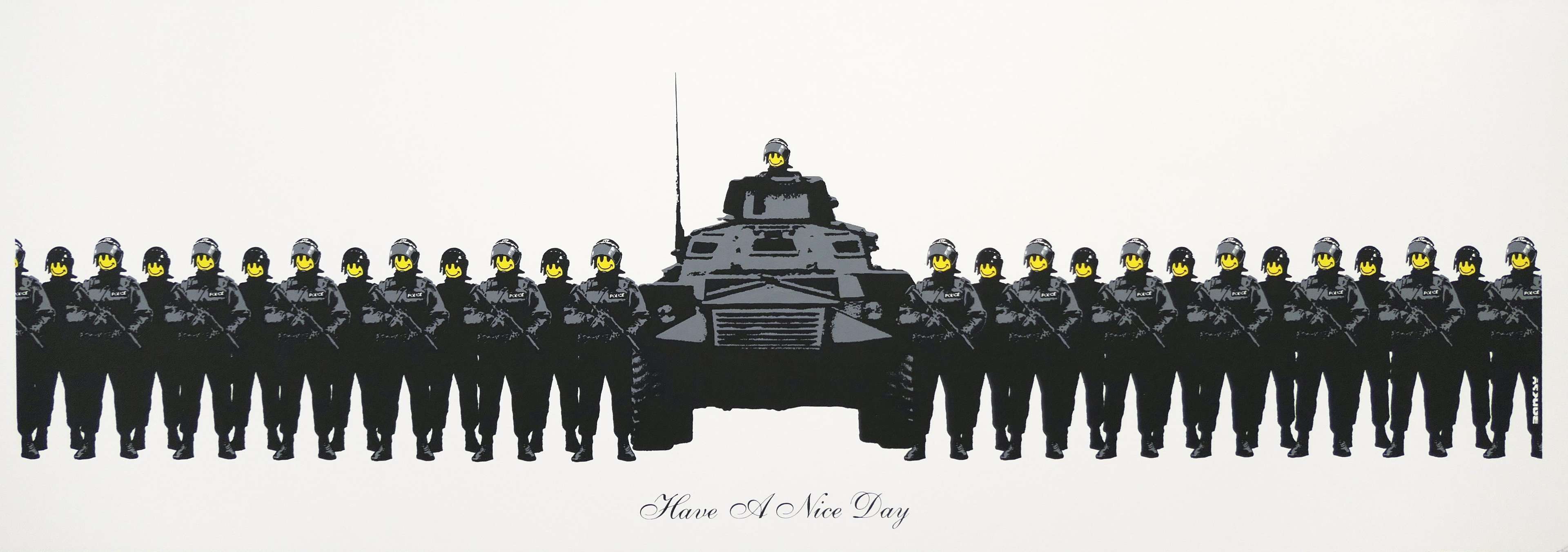Have A Nice Day

Have A Nice Day
Unsigned Print
Banksy
£10,000-£15,000
$20,000-$30,000 Value Indicator
$18,000-$28,000 Value Indicator
¥90,000-¥140,000 Value Indicator
€11,500-€17,000 Value Indicator
$100,000-$160,000 Value Indicator
¥2,080,000-¥3,130,000 Value Indicator
$13,500-$20,000 Value Indicator
There aren't enough data points on this work for a comprehensive result. Please speak to a specialist by making an enquiry.
35 x 100cm, Edition of 500, Screenprint
Auction Results
Track auction value trend
Meaning & Analysis
British street artist Banksy's early screen print, Have A Nice Day (2003), from an unsigned edition of 500, depicts a military police force with the artist's acid-house smiley face pasted over their faces. This juxtaposition simultaneously undermines the forces’ authority while exaggerating their threatening aura.
In one of the first ever screen prints released by Banksy, he takes on law enforcement in a bold and striking way; a landscape piece, which depicts almost thirty military or riot police lined up from left to right, in the middle of them a large military tank, locked and loaded. The piece is entitled Have A Nice Day, which is a hugely ironic sentiment given the menacing nature of the men in riot gear staring out of the canvas.
The officers in the picture have their faces obscured by a yellow ‘acid-house’ smiley face, something most commonly associated with 1990s rave culture, but that can actually trace its roots in popular culture of the 1960s when it was used as a feel-good symbol. Something so innocent and ‘happy’ however, was ripe for subversion and through the decades that followed, the smiley was coopted by various movements ranging from horror films, to serial killers, the Far Right and in popular graphic novel The Watchman - in which it is used to examine the corruption of power. This is incredibly pertinent to Banksy's work, where many of his images use the yellow smiley.